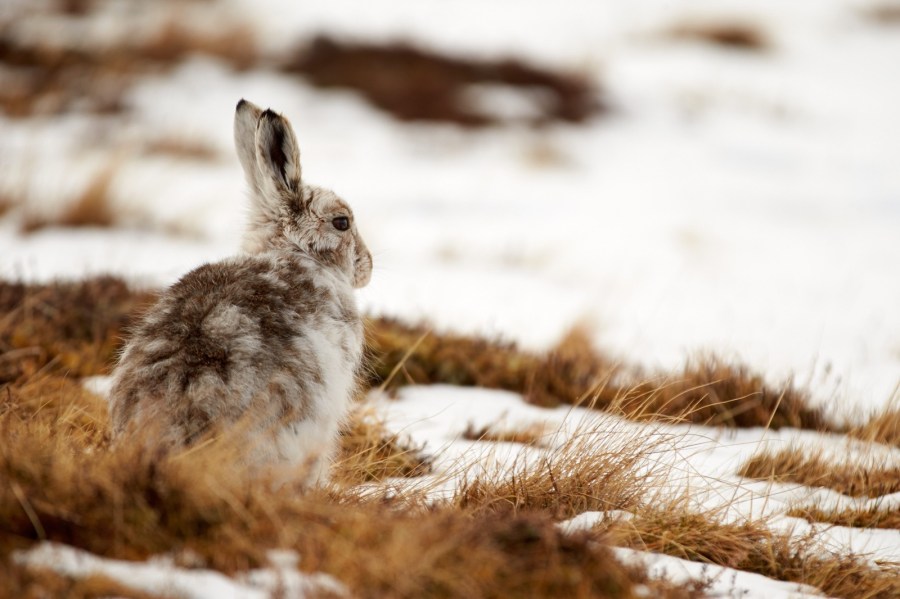A new study led by Dr Adam Watson, the UK’s foremost montane ecologist, demonstrates scale of mountain hare population crash – and suggests grouse moorland management is to blame.
The UK’s only native hare was listed as Near Threatened in a recent review by the Mammal Society, but new research indicates that numbers are dwindling rapidly. 60 years of population counts on moorland sites managed for red grouse shooting (as well as nearby mountain land) were analysed by the Centre for Ecology & Hydrology and the RSPB. The findings were troubling.
Between 1954 and 1999, populations on moorland sites decreased by around 5% per year, a long-term decline thought to be due to changes in land use such as the loss of moorland to forestry plantation. Between 1999 and 2017, the population decline increased to over 30% per year. In 2017, the counted population was less than 1% of original levels in 1954.
On most of the sites studied, the dominant land use was intensive grouse moor management where mountain hares are culled without regulation as a form of disease control. This is ostensibly to benefit red grouse, and has become standard practice since the 1990s – although there is no evidence it has any real benefit on the numbers of grouse shot.
On higher, alpine sites, mountain hares have also declined since 2007, although not to the extent measured elsewhere.
“Both compelling and of great concern”
Dr Adam Watson of the Centre for Ecology & Hydrology was lead author of the work. He commented, “Having reached the age of 88 I am both delighted and relieved to see this paper published in the Journal of Applied Ecology. Having counted mountain hares across the moors and high tops of the eastern Highlands since 1943, I find the decline in numbers of these beautiful animals both compelling and of great concern. We need the Scottish Government and Scottish Natural Heritage to take action to help these iconic mammals of the hill – I hope they will listen to the voice of scientific research.”
Professor Jeremy Wilson, RSPB’s Head of Conservation Science in Scotland, who assisted in analysis of the data, said, “It has been an honour to support Dr Watson in the analysis of his extraordinary long-term data set. These data reveal severe recent declines on grouse moors that are strongly correlated with the start of mountain hare culls for which there is no clear scientific justification. Urgent action is needed if the future conservation status of mountain hares is to be secure.”
Duncan Orr Ewing, Head of Species and Land Management at RSPB Scotland said: “The mountain hare is a keystone native species of the Scottish uplands. This authoritative research suggests that we should be very concerned about its population status in its former strongholds. We consider that large-scale population reduction culls are both illegal under EU law and unwarranted as a method for controlling grouse disease.
“Management of this species should now be more tightly controlled by Scottish Natural Heritage to safeguard mountain hare populations. We expect this subject to be given thorough consideration by the current independent grouse moor enquiry, which is looking at how grouse moors can be managed sustainably and within the law.”
Read the study in full here.
Header image © Ben Queensborough / Shutterstock








